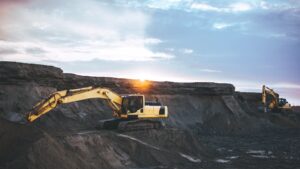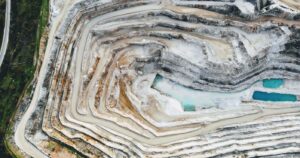Mining and Automation – How an Industry is Addressing Challenges
Since hitting its lowest levels in 2016, the mining industry has witnessed rising demand from the renewables and IT sectors. Increasing capital expenditure and declining productivity levels has led to limited access to quality resources. Also, fluctuating demand (largely from renewable systems demand) and a lack of industry flexibility has led to market instability. Given these factors, emerging startups in mineral exploration are aiming to address these challenges, with a focus on enabling increased discovery rates and reduced costs.
Attractiveness
Approximately $3.6 trillion of capital investment will be required to find new resources between 2013–2030. Currently, the cost of exploration has increased exponentially, while the number of discoveries has reduced. Generally, there is a <1% chance of finding a deposit, with 10,000 prospects needed to be surveyed to find 1 feasible ore body.
Artificial Intelligence (AI) and machine learning can sift through large quantities of data, generating models to predict areas with similar features that have known deposits, reducing the amount of labor required. Drones and autonomous mapping devices allow visual access to remote and unreachable underground areas without endangering workers.
Recently, mineral exploration has attracted players from the technology industry such as Breakthrough Energy Ventures. With concerns rising about the source and footprint of raw materials, new investment streams are opening. The Australian government also launched an Accelerated Discovery Initiative that is focused on mineral exploration, backed with a fund totaling $10 million.
Another key enabler in the market is Unearthed Solutions, a for-profit company based in Australia, that connects corporates to research which can solve their challenges. Holly Bridgewater, industry lead at Unearthed Solutions, considers digital transformation as a positive for mineral exploration but states “the transformation should not be purely technological but incorporate the skills and value people bring to improve overall productivity”.
Emerging Business Models
Mapping and Analytics
|
It received $16 million in Series A funding in a round led by Centricus in 2019, bringing total investment since launch of the company to $23 million+.
|
|
|
|
Its products are being used by Newrange Gold Corp, an exploration company, to map tunnels for sampling. It has also partnered with Normet, an equipment manufacturer, to develop combined software and hardware solutions.
|
Machine Learning
|
|
| Earth AI
|
|
|
|
Emerging innovators are situated in areas with proven mining markets such as Canada, Australia and the USA, giving them rapid market access. To avoid direct competition with mining corporates, these startups are focusing on relatively stand-alone segments within the industry. For example, Earth AI sells the rights to its find for a stake in the project to a mining corporate rather than developing a mine itself. KoBold Metals is also expected to implement a similar model.
Competition and Challenges
Given the pressure on the mining industry to reduce its carbon footprint and the rise of ethical investing, investors are wary of funding the industry. This shifts corporate’s focus from innovation to retaining social license to operate and mitigating negative effects of their mining operations. For example, Glencore is using virtual reality to train miners, starting with its mine in Zambia in 2016, while BHP is incorporating the use of underground fleet management systems for task management, proximity detection, and worker safety starting 2019.
AI is being used for preliminary exploration as finding precise locations is still not achievable with the current state of the technology, therefore still requiring supporting geological surveys and multiple drilling processes. This can be improved by integrating data from multiple sources and systems and enhancing collaboration between mining corporates, junior miners, and data science innovators. AI–driven mineral exploration is still not mainstream, with a few corporates employing the technology very recently:
|
|
|
|
|
|
Conditions for Success
For start-ups’ AI solutions to succeed, their systems need to be fed insightful data to adequately train them. Goldspot Discoveries and Imago are partnering with junior miners to use their extensive geological and geographical data while Earth AI is using satellite data from NASA. Corporates do not want to invest in technology that is not proven, but the nature of the AI solutions requires access to a company’s mining data to render results. This presents a challenge to innovators, who need to generate credibility of their solutions before key partnerships can be made. Alternatively, innovators can use opensource geological data available through regional governments to train AI.
Other innovators are becoming aware of the opportunity in mining and are expanding to this sector. DroneDeploy and Microdrones are applying their unmanned aerial vehicles for exploration, and although their drones do not have extensive mining specifications, they do have better hardware and drone control. Koan Analytics, a data aggregation and analytics innovator, is applying its machine learning expertise to mineral exploration. Bryn Wyka, founder of Koan Analytics, highlights the challenge with using mining data to feed AI, “the real challenge is converting the unstructured mining data into structured data that AI can understand and use”. Koan Analytics is testing making pdf files readable by AI, which will allow mining companies to develop insights from their data easily.
Hurdles ahead
While AI is projected to increase productivity and reduce costs, there are concerns about its impact on social relations. Automation could take away 44% of unskilled workers jobs’ by the mid 2030s, drastically reducing the employment benefit mining operations provide to local communities and the economy. The skills gap within the industry is also hindering the adoption of advanced solutions as more of the current workforce possesses basic skills. The industry is not as attractive to younger tech–savvy people leading to a further increase in the gap.
And Finally…
Although AI is relatively new, its use and need in mineral exploration is evident given the increased discovery rates observed. With the projected growth and advancement of the technology, corporates need to increase their efforts to partner with emerging innovators to stay ahead of competitors and increase productivity.
 Exyn Technologies,
Exyn Technologies, Emesent
Emesent GeoSlam
GeoSlam Imago
Imago
 KoBold Metals
KoBold Metals Goldspot Discoveries
Goldspot Discoveries

